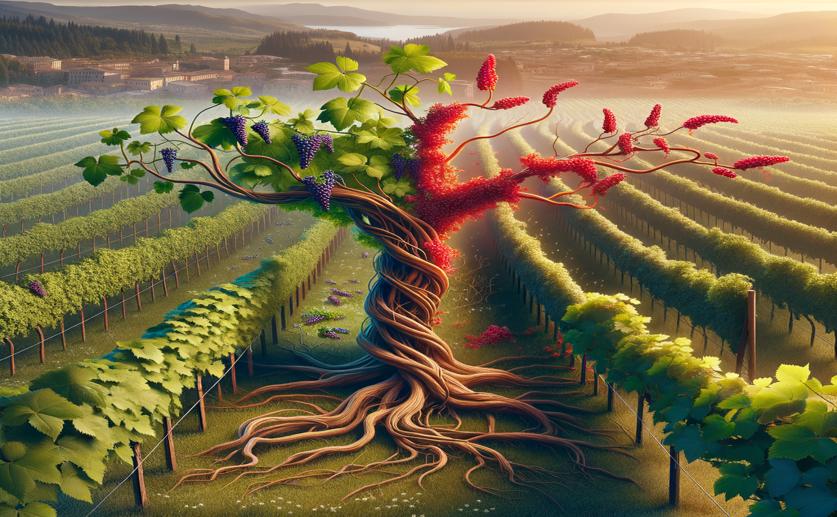
How Wild and Cultivated Grapevines Are Related: A Look at Italian Lambruscos
Jim Crocker
30th May, 2024

Image Source: Natural Science News, 2024
Key Findings
- The study by the National Research Council of Italy examined the genetic relationships between 283 cultivated grape varieties and 65 wild grape individuals
- Researchers found that wild grape populations were contaminated by pollen from specific cultivated grape varieties, threatening the genetic purity of wild grapes
- The study also identified genetic mixing from wild grapes into cultivated varieties, which helped create new grape varieties with mixed ancestry
AgricultureGeneticsPlant Science
References
Main Study
1) Genetic relationships and introgression events between wild and cultivated grapevines (Vitis vinifera L.): focus on Italian Lambruscos.
Published 29th May, 2024
https://doi.org/10.1038/s41598-024-62774-w
Related Studies
2) Historical origins and genetic diversity of wine grapes.
Journal: Trends in genetics : TIG, Issue: Vol 22, Issue 9, Sep 2006
3) Evolutionary genomics of grape (Vitis vinifera ssp. vinifera) domestication.
4) Dual domestications and origin of traits in grapevine evolution.



 20th May, 2024 | Greg Howard
20th May, 2024 | Greg Howard